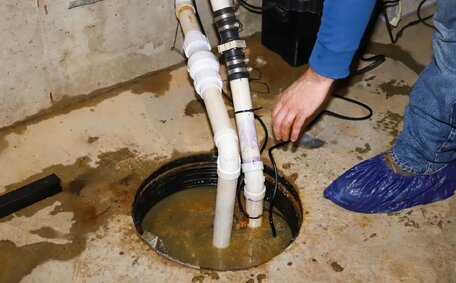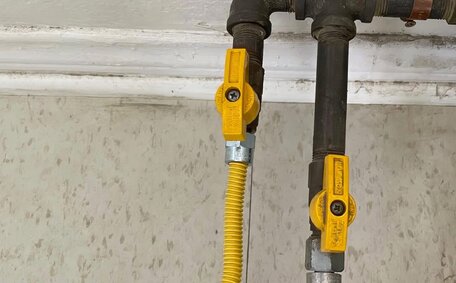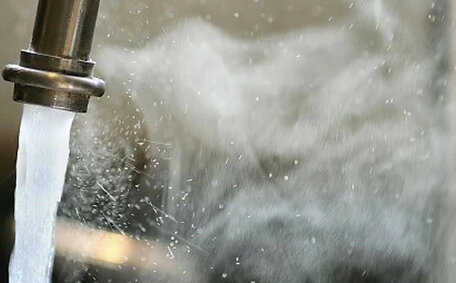Introduction to Hot Water Systems in Multi-Story Buildings
Supplying reliable and efficient hot water to multi-story buildings presents unique challenges. Unlike single-story households, pressure fluctuations, water usage peaks, and energy efficiency need special consideration in high-rise residential and commercial settings.
Installing hot water systems in multi-level buildings requires careful consideration of system placement for optimal water pressure and distribution. It’s essential to select a system with the capacity to handle multiple users concurrently and choose a system type that matches the building’s design and usage.
Kellyville Plumbing, with significant experience servicing the Sydney area, specialises in optimising solar hot water systems for multi-residential developments. Our service assists clients in assessing their hot water plumbing options to comply with standards, maximise energy efficiency, and provide reliable hot water distribution throughout the building.
Understanding Regulations and Standards for Placement and Installation
When installing hot water systems in multi-story buildings, it is crucial we comply with Australian standards to ensure safety, reliability and energy efficiency. A key guideline is the AS/NZS 5601.1 2013 for gas installations, covering system placement and installation.
For outdoor installations, the standards require the hot water unit to be fixed on a concrete base with safe trays to prevent corrosion. Indoor systems also need safe trays along with an adequate drainage system in case of leaks. Other requirements include sufficient access space for servicing and proper flueing arrangements.
Strict adherence to the latest standards is pivotal in multi-occupancy buildings to safeguard users. Kellyville Plumbing, a licenced provider, ensures that every hot water system installation aligns with Australian regulations, offering clients complete assurance of compliance.
Optimal System Positioning for Efficiency and Performance
The location of water heaters relative to taps and outlets is crucial for maximising efficiency. Installing hot water heater systems closer to water meter draw-off points in multi-story buildings minimises heat loss that occurs in long pipe runs up to 250 metres.
In a 200-unit high-rise with a central hot water system, approximately 90 litres of cold water is wasted before reaching taps on the 20th floor. Strategically positioning separate systems on higher floors cuts this waste water and saves energy.
We strategically install systems like heat pumps or solar, which systems can power hot water needs, closer to clusters of apartments. This modular approach provides hot water on demand without long delays. To cater to areas with significant hot water needs, such as the kitchen and laundry, we integrate manifold systems that link multiple heaters across different zones.
Careful placement optimises efficiency and performance. As the leading local experts, Kellyville Plumbing leverages in-depth understanding of system configurations in multi-residential settings to maximise convenience and savings.
Preventing Heat Loss in Distribution
Distributing hot water throughout a multi-story building challenges the system with significant heat loss from lengthy pipe runs. Studies show over 90 litres of cooled water, not yet warm water, can go down the drain from a centrally located water heater before reaching 20th floor taps.
We mitigate these inefficiencies with electric hot water systems featuring pipe insulation, heat traps, and circulating pumps for larger buildings. Insulating pipes helps maintain the water temperature by reducing heat loss to the environment. We also install one-way heat traps on your hot water system lines to block convection loops, complemented by hot water meter installation to monitor usage.
In taller buildings, circulating pumps maintain a consistent hot water temperature within centralised systems. This supply system compensates for the decrease in mains pressure over height. We place centralised hot water systems near ground level apartment clusters for optimal accessibility for residents.
With sound installation strategies that target heat retention and system placement, Kellyville Plumbing ensures even two showers can be taken concurrently without any drop in water temperature, regardless of apartment height.
Options for System Types and Configurations
The primary options for hot water systems in multi-story buildings are gas and electric heat pump units. Gas systems, like natural gas continuous flow hot water or storage tanks, are generally more affordable to install but may incur higher running costs due to greenhouse gas emissions and energy bills.
By contrast, electric heat pump systems are pricier upfront but are very efficient in the long run, using ambient air and PV energy to heat water. We recommend heat pumps for green-conscious developments targeting low carbon emissions. Where gas connections exist, efficient condensing units with minimal standby losses work well.
For better control, we strategically place electric heat pumps with small storage cylinder close to clusters of apartments.
Hybrid modular designs are ideal for very tall buildings.
As a full-service plumbing specialist, Kellyville Plumbing will provide great service in objectively assessing the building plan for your new house, along with usage needs and budget, to advise on the optimal system types and strategic configurations for a reliable, efficient hot water supply.
Capacity and Demand Considerations
When selecting a hot water system for a multi-story building, a key factor is ensuring adequate capacity to meet the demand. We calculate the likely peak hourly hot water usage across all apartments to ensure the system can appropriately meet the combined demand.
As an estimate for how much capacity is required, it’s around 50-80 litres per hour for each apartment. How many litres per hour capacity is needed for a 200-unit high-rise? To prevent hot water shortages during peak periods, a multi-story building requires a water heating capacity between 10,000 to 16,000 litres, guaranteeing same-day access for all residents.
We suggest on-demand systems such as central gas continuous flow units or electric heat pumps for efficiency. These self-modulate their output based on flow rate sensors to match real-time demand from multiple users, ensuring a steady flow hot water supply. Appropriately sized, they deliver endless hot water reliably without capacity constraints.
Our experts analyse your multi-story building plans and projected occupancy to meet the hot water demands with optimal system specifications for your development. We ensure the technology, size and installation strategy can comfortably meet hot water demand when the building is at full capacity.
Optimizing Water Pressure on Upper Floors
Maintaining adequate water pressure throughout a multi-story building is critical for convenient hot water supply. As water travels to upper floors, pressure drops due to friction loss in pipes and gravity fighting against upward flow.
To counteract pressure loss, To enhance circulation, we install in-line pumps within the pump hot water system. In buildings over three storeys, the use of pump systems with pressure boosters is necessary to deliver water to higher floors.
Locating efficient heat pumps or gas units on upper floors, decentralising hot water systems, can improve distribution compared to central systems. This allows self-contained heating closer to usage points. Insulated on-demand recirculating systems also help optimise pressure.
With smart pump integration and modular heating methods, Kellyville Plumbing guarantees optimised water pressure for reliable hot water convenience, even for the top-most apartments in tall high-rises.
Installation Best Practices
When installing hot water systems in multi-residential buildings, adhering to best practises is key for safety, performance and longevity. Kellyville Plumbing guarantees professional installation and commissioning of plumbing work to meet manufacturer specifications.
We take safety extremely seriously. Our licenced technicians ensure compliance with Australian Standards for placement, clearances, drainage trays, pressure relief valves, and flameproofing. We also isolate worksites with barrier screens and install warning signs when required.
Meticulous pipework is critical too. Thermal insulation on hot water lines retains heat effectively.
We use high-quality copper, stainless steel, or PEX piping to minimise corrosion and leaks in your system. We pressure test all pipework and use precise jointing techniques for robust set up.
Properly calculating hot water system size and configurations is essential to cater to multi-story demand. Undersized units lead to shortages while oversized ones incur unnecessary costs. Our experts analyse unique requirements to specify perfectly sized solutions.
For superior performance in your home, Our professional team precisely adjusts components and digitally tests system functionality. Seamless integration with building controls optimises automation and allows remote monitoring. With commission testing complete, we provide comprehensive maintenance plans so clients know how to maintain ongoing efficiency.
By following integral installation best practises personalised for each site, Kellyville Plumbing delivers perfectly optimised hot water infrastructure for multi-story buildings where comfort and convenience is assured for all residents.
Energy Efficiency Recommendations
When selecting hot water systems in multi-story buildings, energy efficiency should be a key priority to minimise operational costs and environmental impact.
We advocate for heat pump hot water systems as the most energy-efficient electric choice. Heat pumps utilise ambient air and solar energy for heating water, operating at a lower electricity consumption compared to traditional systems. Despite the higher upfront cost, investing in a new hot water system like a heat pump offers significant long-term savings on energy bills.
For gas systems, efficient heating systems such as condensing units provide excellent energy savings over conventional storage system or hot water tank units. We recommend high-efficiency condensing models that boast over 90% efficiency in using gas for water heating.
Strategically decentralising water storage systems by installing split systems over zones or on upper floors also prevents heat wastage from long pipe runs. Insulating all hot water storage lines is crucial to minimise heat loss.
Circulating pumps maintain water temperature and save energy by keeping water constantly hot, preventing cooling during transit. We carefully size central heaters to avoid overcapacity and reduce energy waste. The hot water usage for each apartment informs our system specifications to ensure optimal performance.
Adopting solar water thermal pre-heaters or PVs integrated with heat pump water heaters can further amplify savings. We help building owners benefit from available renewable energy rebates to curtail expenses.
Our well-designed systems use energy-efficient technologies, are sized for actual demand, and incorporate solar power, delivering optimised hot water infrastructure that minimises carbon footprint and delights our clients.






